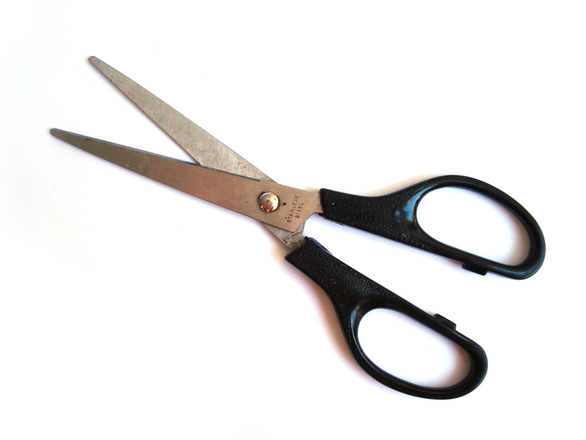All eyes are on Donald Trump to see if he will pivot to a more presidential bearing now that he’s the presumptive nominee of the Republican party. But who am I kidding? All eyes have been on the businessman.
My etymological eyes, however, have been on pundits’ and reporters’ go-to term for Trump’s potential repositioning: pivot. Where does this word come from?

Pivot
Originally, a pivot was a “hinge pin” or “fulcrum”: a central rod around which a mechanism turns. The Oxford English Dictionary (OED) first documents the word in the compound pivot shears (“pevet-sheres”) by the very end of the 14th century. By the mid 1700s, pivot itself pivoted from mechanism to metaphor for any central part or person of an operation. The word has since been swiveling in military contexts, linguistics, sports, math, and even Japanese poetry. Come the 1830-40s, we find both the adjective pivotal (“crucial”) and the verb pivot.
As a verb today, pivot often expresses a very particular action: a swift and strategic turn on the spot, or, better yet, pivot . At least since the late 1890s according to the OED, basketball players have been so pivoting, with one foot pivoting on the floor, the other maneuvering for the best path to the basket. President Obama, for example, has been pursuing a foreign policy “Pivot to Asia,” shifting interests and investments away from the Middle East to East Asia and the Pacific.
Now, English’s pivot derives from the French pivot, also naming a “pivot,” though the record shows figurative extensions early on; one usage references a kind of dance. But from here, etymologists have oscillated on the word’s deeper origins.
Some look to the Spanish púa (“sharp point”), Catalan piu (“spindle”), and Occitan pivèu (“pivot,” in the earlier mechanical sense of the word). Perhaps, as Barnhart notes, all these pivot on the Old Provençal pua, the “tooth of a comb,” emerging from a pre-Celtic Indo-European *puga, a “point” or “peak.” A related form is the Latin pūgiō: a “dagger.”
Others, like Skeat, consider the Italian piva, a “pipe,” ultimately from Latin’s pipare, “to chirp like a bird,” and source of English’s own pipe. Italian, Weekley observes, also has a diminutive pivolo, a “peg,” “dibble,” and “penis.” The latter requires little of the imagination for its explanation.
We don’t know the ultimate origin of pivot, but, for many, its proposed roots may still apply to Trump’s presumptive nomination. Many on the right worry his nomination will be a lethal dagger to their party and principles. Many on the left – and right and center – think he’s a not so diminutive pivolo. But as divided as American politics may be, we can all agree Trump will definitely be relying on the teeth of a comb to keep his hair coiffed for the next phase of the campaign, regardless of whether or not he pivots.
interesting post . Thanks for sharing 🙂
LikeLiked by 1 person
I love these posts! Thanks for taking the time to put them together!
LikeLike